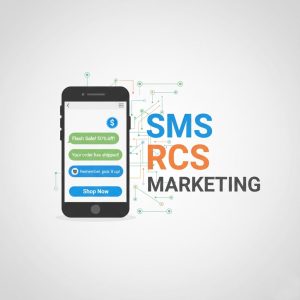Paid vs Organic App Marketing: Which Strategy Drives Better Results?

The App Marketing Dilemma
In today’s competitive mobile scenario, developers and marketers face an important option: Pay heavily in paid app marketing campaigns or focus on building biological visibility through the App Store Optimization (ASO) and Content Marketing. Large app stores and global apps to reach $ 270 billion by 2025 with more than 5 million apps, the bet may not be high.
Paid and organic app marketing strategy provides different benefits and boundaries. In the ideal approach, both methods are often strategically combined to maximize visibility, user collection and investment returns. This wide guide examines the significant difference between payment and organic app marketing, which helps you determine the optimal mix of your app development strategy.
Understanding Paid App Marketing
Paid app marketing encompasses all promotional strategies that require direct financial investment to generate visibility and user acquisition. These campaigns operate on a “pay-to-play” model, where visibility ceases once the budget runs out.
Types of Paid App Marketing Campaigns
- App Install Campaigns: Advertisements specifically designed to drive app installations across platforms like Google Ads, Apple Search Ads, and social media networks.
- Retargeting Campaigns: Ads that target users who have previously interacted with your app but haven’t completed desired actions like installation or in-app purchases.
- Influencer Marketing: Partnering with relevant social media personalities to promote your app to their established audiences.
- Paid Social Media Campaigns: Targeted advertisements across platforms like Facebook, Instagram, TikTok, and Twitter to reach specific demographic segments.
- Display Network Advertising: Visual ads displayed across websites within major advertising networks like Google Display Network.
Advantages of Paid App Marketing
- Immediate Visibility: Paid campaigns can generate instant traffic and downloads, unlike organic strategies that may take months to yield results.
- Precise Targeting: Advanced targeting capabilities allow you to reach highly specific user segments based on demographics, behaviors, and interests.
- Scalability: Easily scale your user acquisition efforts by increasing your advertising budget.
- Predictable Results: Data-driven campaigns provide relatively predictable outcomes based on historical performance metrics.
- Competitive Positioning: Ability to compete for visibility in highly competitive niches where organic ranking might be challenging.
Limitations of Paid App Marketing
- Cost Sustainability: Acquisition costs can quickly escalate, especially in competitive categories.
- Diminishing Returns: Performance often declines once campaigns end, requiring continuous investment.
- Ad Fatigue: Users may develop “banner blindness” or negative perceptions from excessive ad exposure.
- Quality Concerns: Users acquired through paid channels sometimes show lower retention and lifetime value.
According to recent mobile marketing research, the average cost per install (CPI) ranges from $1.75 to $3.50 for iOS apps and $1.20 to $2.50 for Android apps, varying significantly across categories.
Mastering Organic App Marketing
Organic app marketing focuses on non-paid strategies to increase visibility, downloads, and user engagement. While these approaches typically require more time to generate results, they often produce more sustainable long-term growth.
Core Organic App Marketing Strategies
- App Store Optimization (ASO): Optimizing your app’s store listing to improve visibility in search results and conversion rates.
- Content Marketing: Creating valuable, relevant content that attracts and engages your target audience while establishing thought leadership.
- Social Media Presence: Building authentic connections with potential users through regular, valuable social media engagement.
- Email Marketing: Nurturing relationships with users and prospects through personalized email communication.
- Public Relations: Generating media coverage and building brand credibility through press releases and media relationships.
- Community Building: Fostering active user communities around your app to drive word-of-mouth promotion.
Advantages of Organic App Marketing
- Long-Term Sustainability: Organic growth typically continues delivering results long after the initial effort.
- Higher User Quality: Users who discover apps organically often demonstrate stronger engagement and retention.
- Cost Efficiency: Lower direct costs compared to paid campaigns, though significant time investment is required.
- Trust Building: Organic methods generally build stronger credibility with users than advertisements.
- Compound Growth Effect: Organic efforts tend to build upon themselves, creating accelerating returns over time.
Limitations of Organic App Marketing
- Time-Intensive: Results typically take longer to materialize, often requiring months of consistent effort.
- Less Predictable: Outcomes can be less predictable than paid campaigns.
- Resource Requirements: Demands consistent content creation and optimization efforts.
- Competitive Challenges: Breaking through in highly competitive categories can be difficult without paid support.
Our research at MobileDominate shows that apps with comprehensive ASO strategies experience 30-40% more organic downloads than those without optimized listings.
The ROI Comparison: Paid vs Organic
When evaluating return on investment between paid and organic app marketing strategies, consider these key metrics:
Paid Marketing ROI Factors
- Customer Acquisition Cost (CAC): The average expense to acquire one user.
- Conversion Rate: The percentage of ad viewers who install your app.
- User Lifetime Value (LTV): The revenue generated by an average user throughout their relationship with your app.
- Return on Ad Spend (ROAS): Revenue generated relative to advertising expenditure.
- Payback Period: Time required to recoup acquisition costs through user revenue.
Organic Marketing ROI Factors
- Time Investment: Hours spent on content creation, optimization, and community engagement.
- Tool Costs: Expenses for ASO tools, content management systems, and analytics platforms.
- Organic Conversion Rate: Percentage of organic traffic that converts to installations.
- Organic User LTV: Lifetime value of users acquired through organic channels.
- Brand Equity: Long-term value created through brand recognition and reputation.
According to industry benchmarks from AppsFlyer’s State of App Marketing, organic users demonstrate 30-50% higher retention rates and up to 40% higher lifetime value compared to users acquired through paid channels.
Creating the Perfect Balanced Approach
Rather than viewing paid and organic app marketing as competing alternatives, successful developers integrate both strategies to maximize results. Here’s how to create an effective balanced approach:
1. Establish Your ASO Foundation First
Before investing heavily in paid campaigns, ensure your app store listing is fully optimized. This includes:
- Keyword-rich titles and descriptions
- Compelling screenshots and preview videos
- Positive reviews and ratings management
- Regular A/B testing of store assets
Our comprehensive ASO guide provides a step-by-step process for optimizing your app store presence.
2. Use Paid Campaigns Strategically
Rather than running continuous paid campaigns, deploy them strategically:
- Launch Periods: Accelerate initial momentum with concentrated advertising.
- Feature Releases: Promote major updates and new functionality.
- Seasonal Opportunities: Capitalize on relevant seasonal trends.
- Competitive Responses: Counter competitors’ major marketing initiatives.
3. Leverage Data Between Channels
Use insights from each channel to improve the other:
- Apply high-performing paid keywords to your organic ASO strategy.
- Test messaging variations in organic content before scaling with paid ads.
- Target paid campaigns toward demographics that show strong organic engagement.
4. Implement the 70/30 Budget Rule
Many successful app marketers follow a modified 70/30 rule:
- Allocate 70% of your marketing budget to strategies proven to work for your specific app.
- Dedicate 30% to testing new channels, messages, and audience segments.
This balanced approach ensures stable growth while continuously discovering new opportunities.
Measuring Success: The Right KPIs for Both Approaches
Effective measurement is crucial for optimizing your marketing mix. Track these key performance indicators for both paid and organic efforts:
Paid Campaign KPIs
- Cost Per Install (CPI)
- Click-Through Rate (CTR)
- Conversion Rate
- Return on Ad Spend (ROAS)
- Post-Install Events (registrations, purchases)
- Uninstall Rate
Organic Marketing KPIs
- Keyword Rankings
- Organic Impressions
- Conversion Rate from Store Page Views
- Organic Traffic Sources
- Average Rating and Review Sentiment
- Social Media Engagement Metrics
Conclusion: Finding Your Perfect Balance
The ideal balance between paid and organic app marketing varies depending on your app category, target groups, lack of budget and development. A perfect work for a random game can be ineffective for a productivity app.
Begin by investing in a solid organic foundation through extensive ASO and material marketing strategies. Again, layers in operations targeted to accelerate development during the strategic period. To limit your approach, continuously analyze the results data and retrieve resources, based on which channels provide the best return.
Remember that the most successful app marketing strategies are favorable, not stable. Market status, user preferences and platformalgorithms are continuously developed, and require flexible marketing methods.
For personalized guidance on developing an optimal app marketing strategy, explore our app marketing consultation services or download our comprehensive App Marketing ROI Calculator.
What’s your experience with paid versus organic app marketing strategies? Share your insights in the comments below!








